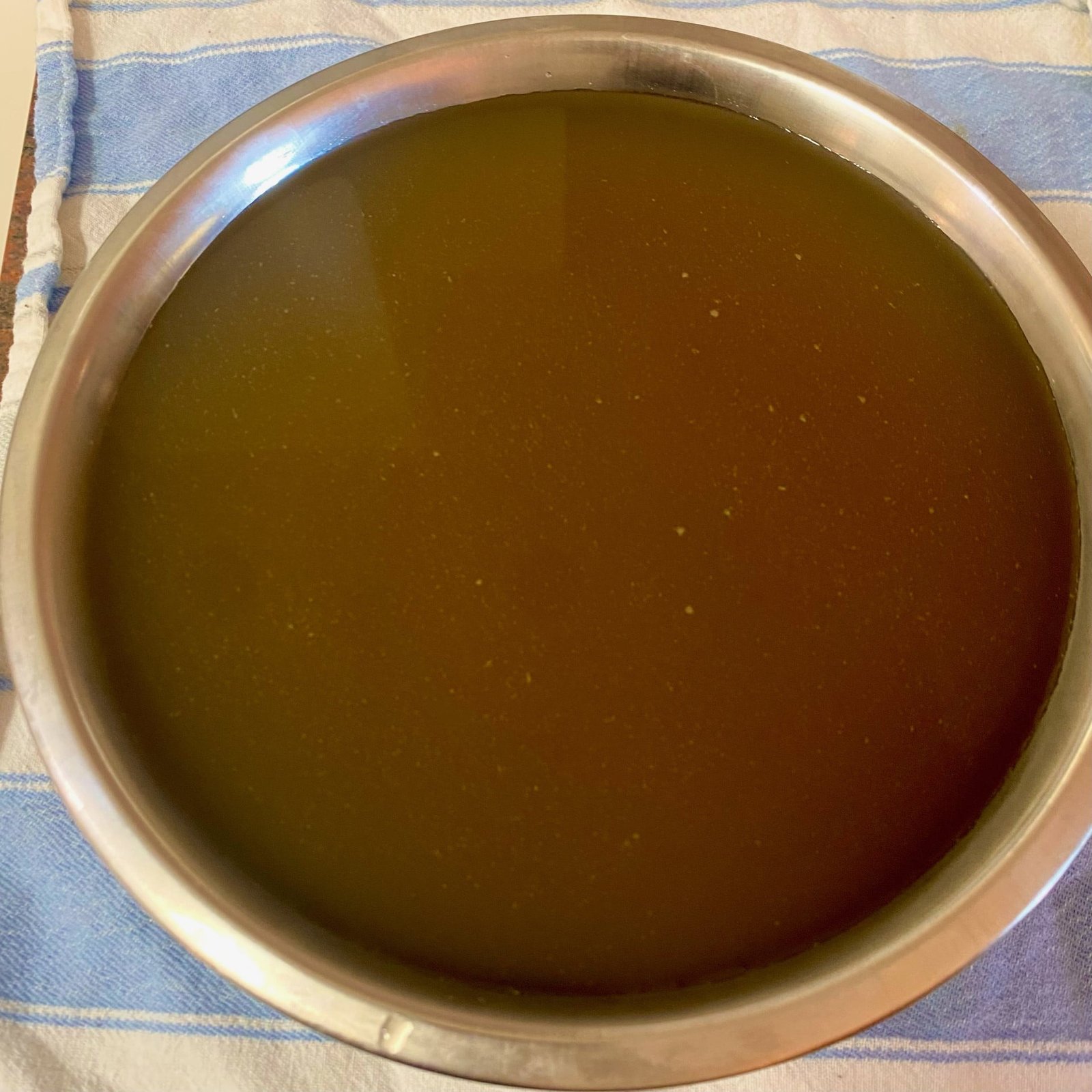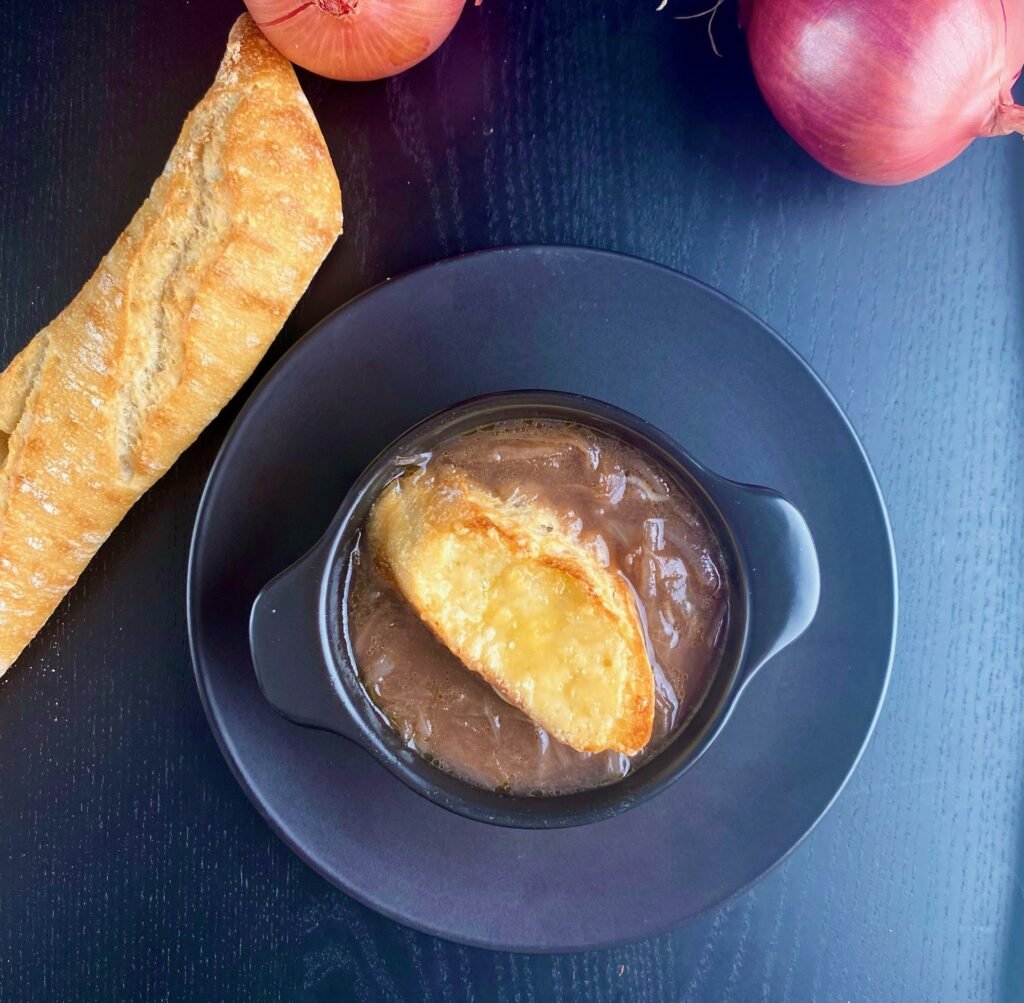Classic Beef Stock5 (1)

Any aspiring home cook should always ensure they have an ample supply of quality beef stock in their freezer. From soups to casseroles to stir fries and stews, Beef Stock is such a versatile ingredient in home cooking. A Classic Beef Stock simply adds so much flavor to an assortment of brilliant dishes. Without it, you’re either using water which will, as its namesake states – will water down the flavor of food
Get into the good habit of saving all your bones and any beef scraps after cooking. Don’t throw them out, put them into a Ziplock back and throw them into the freezer. The cornerstone to a good stock is quality bones. Cooking the bones at a high temperature will release all the beautiful fat and flavor which will make a good stock
Alternatively, if you need to prepare a stock in a hurry, you can always head to y our local butcher or supermarket and buy some bones from them super cheap
Store bought Stock is not great for Home Cooking
We would highly recommend not using store bought stock for home cooking. It can be quite expensive and worst of all, is so unbelievably bad for you. To maintain the shelf life of beef stock in stores they are generally loaded with salt. It’s horrendously unhealthy for you, even the ‘low sodium’ branded ones. Please avoid store bought beef stock at all costs
Having that much Salt in the stock also makes it very difficult to cook with. Once you add the store-bought stock to a recipe, it’s immediately going to be extremely salty. So, if you’ve previously added Salt to the dish before adding the Stock, chances are it’s going to be way too salty, potentially ruining your dish
You’ll end up having to fight against the stock to try and reduce the salty flavor in your cooking, as opposed to seasoning your dish as you cook to develop the flavors. It’s really just a backwards way of doing things and is not great for cooking great food!

What are the best types of Beef Bones to make a great Beef Stock with?
We’ve made a bunch of Beef Stocks and Broths over the years and can safely say you don’t need to be too picky when it comes to what Bones to use. Our best advice is to simply retain any bones you’ve cooked from previous meals and combine them all into the Stock when it’s ready to be cooked
If you haven’t been able to stockpile Bones, but need to still cook up a Beef Stock you can easily head out to the grocery store and pick some up. Almost all grocery stores will sell Beef Bones (along with Chicken, and many times Veal Bones) for this very purpose. You can buy them super cheap, usually only a couple of bucks for a kg of them
The Classic Preparation for a Great Beef Stock involves two cooking methods
To make a Classic Beef Stock you must prepare the ingredients the traditional way. That is, to first Roast the Beef Bones and Vegetables before slowly cooking them in water on the stovetop
The roasting technique is a critical step to extract as much flavor from the ingredients as possible. Simply place the chunks of Beef Bones with your Vegetables onto a roasting pan and roast them for about 30 – 40 minutes at 400F. This technique will caramelize all the ingredients and slightly char them, giving them the most wonderful flavor
You then transfer the roasted ingredients into a large Pot (such as a Dutch Oven or Stock Pot) and cover them well with water. Bring the mixture to a boil and then reduce the heat so a simmer. Cover, then slowly cook for about 4 – 5 hours to extract all of that flavor from the Beef and Vegetables into the water
There are shortcuts to this recipe. For instance, if you have an Instant Pot you can extract the flavor from the Beef and Vegetables in a fraction of the time, about 1 ½ hours total time. We’ve got a great recipe for Instant Pot Beef Broth here. However, for the traditionalists, this technique here is the right, and only way you should make a Beef Broth
Cheesecloth is critical to get the best quality Classic Beef Stock
Straining the stock isn’t as straight forward as you think. Sure, you can simply remove all the large bones then strain the Stock through a strainer and be done with it. However, if you want the clearest Stock possible, we highly recommend investing in some Cheesecloth
Cheesecloth is literally just a cloth. There’s no cheese in it! By placing it inside your strainer before you pour the stock through it will produce a remarkably clearer Beef Stock. It’s super cheap to buy, and can be picked up in most department stores and some grocery stores. We even found it at Home Depot! For a small investment it will make the end result of your Classic Beef Stock much better
Recipe Details
6 – 10 people
5 minutes
6 – 7 hours
6 – 7 hours
Classic Beef Stock Recipe
Ingredients
- 3-4 lbs. Beef Bones and Beef Scraps
- 2 Carrots, halved
- 2 Large Onions, halved
- Water
You will also require some Cheesecloth to strain the stock along with a fine sieve
Instructions
- Scatter the Beef Bones, Scraps, Carrots and Onions in a large roasting tray. Roast in an oven set to 400 degrees for 30 – 40 minutes
- Remove pieces from Oven and set aside. Scrape all the residual meaty goodness stuck to the roasting tray. These are packed full of flavor, so we want to keep these goodies in the stock!
- Place all of the roasted ingredients into a large pot and submerge fully with water. Cover and bring to a boil, then reduce to a very low simmer
- Leave the pot to simmer untouched for 4 – 5 hours at this low temperature. This process is extracting all of the beautiful flavor from the ingredients and transferring your water into a lovely stock
- When done, turn off the heat and skim the fatty, scummy parts of the stock off the top. Best way to do this is with a ladle or large spoon
- Place a piece of cheese cloth into a fine sieve and carefully pour the Stock through the sieve into a large bowl. To avoid excess splatter, it’s best to remove any large bones and vegetables before you start straining
- Let the stock cool to room temperature and then use what you need in cooking immediately, and freeze the remainder
We’ve found the best way to store the stock in the freezer is to measure out individual 1 cup portions and pour them into their own bags. If you are really organized you can label the bags too, so you know what type of stock it is, and how much volume is in each
Now that you’ve got some beautiful Beef Stock, check out our Soup recipes for some beautiful Soups you can create. One of our favorites is this Classic French Onion Soup recipe. Happy Cooking!